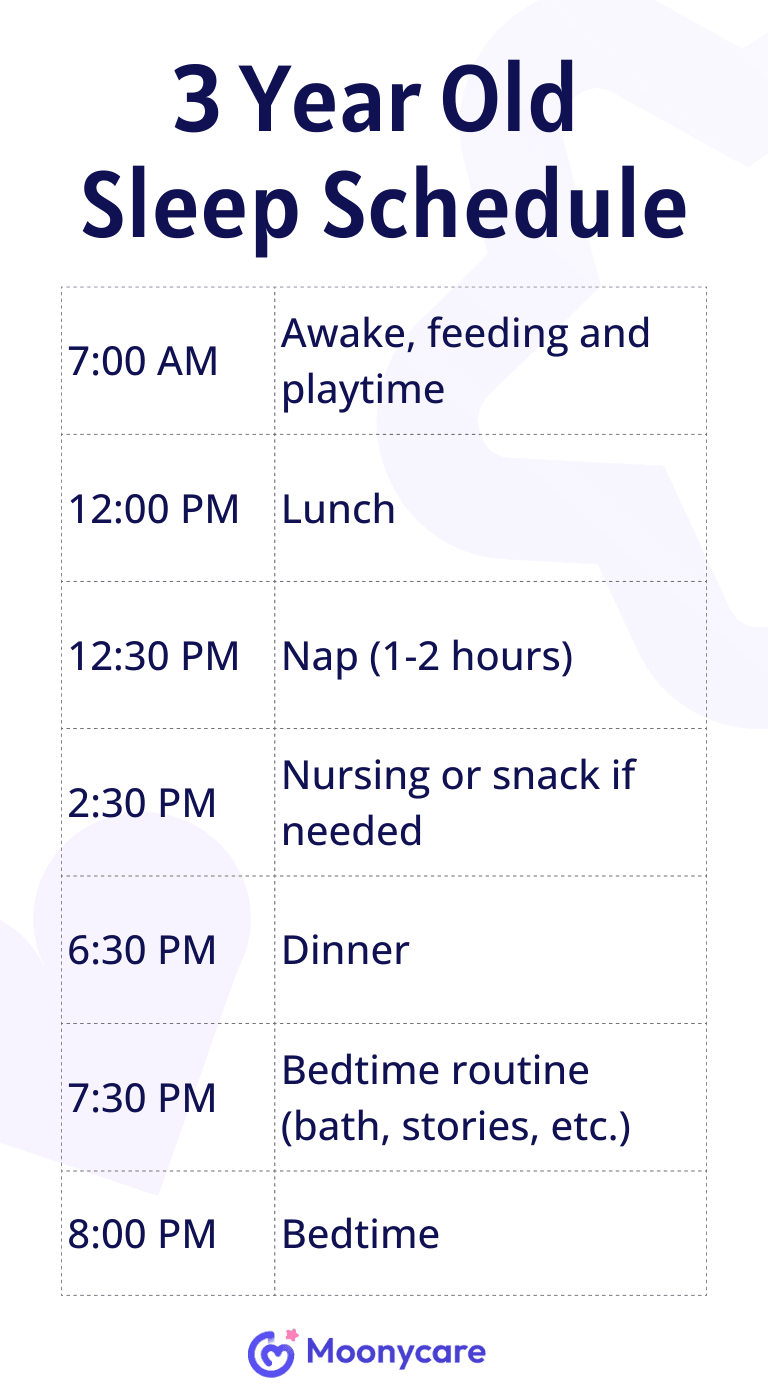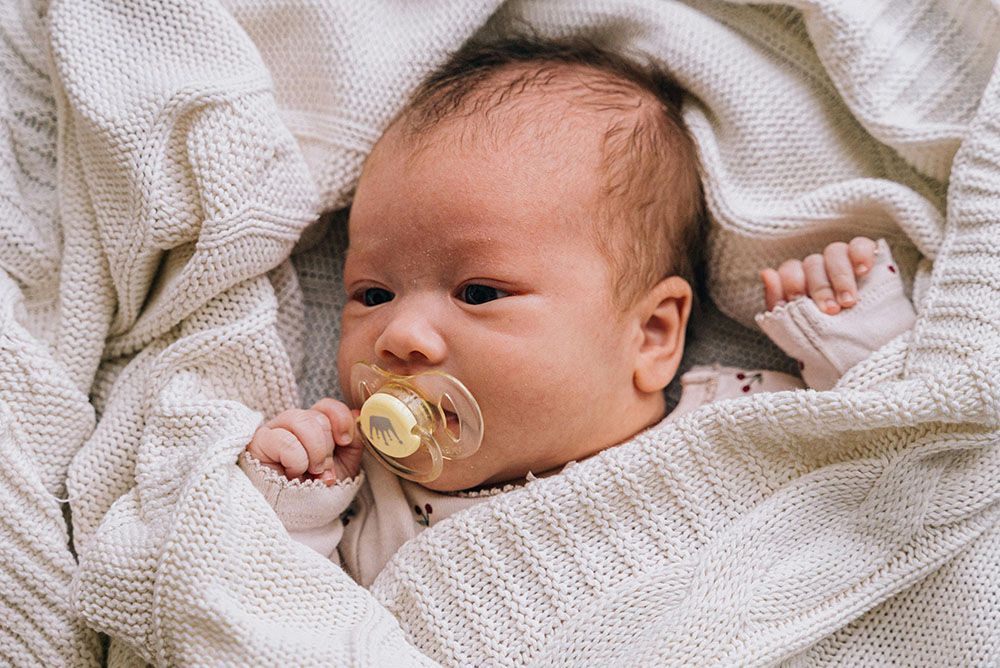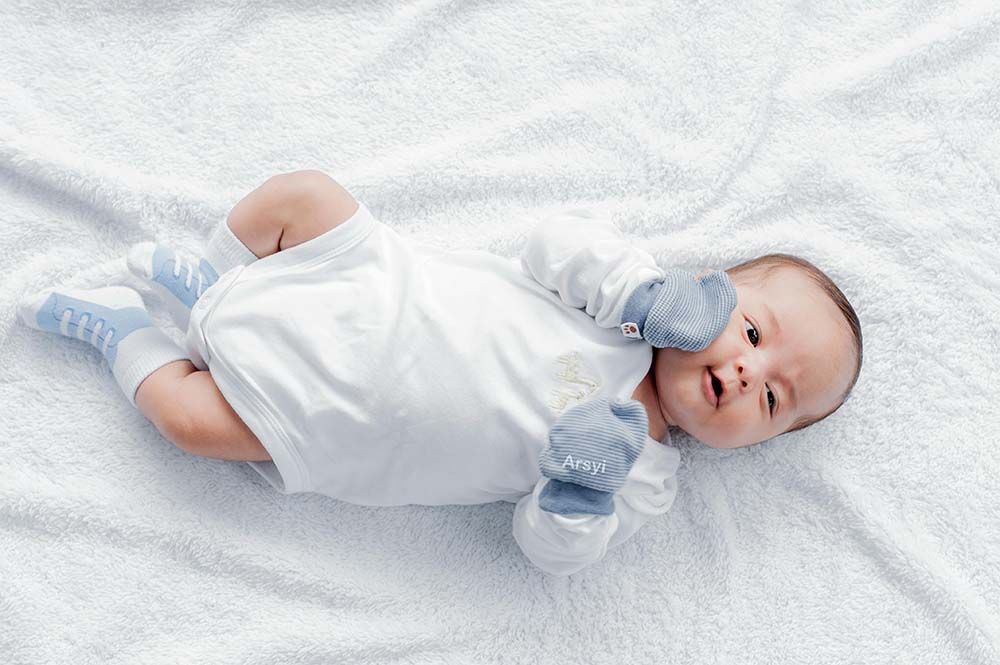

Ensuring that your 3-year-old gets the right amount of sleep is essential for their development and overall well-being. Thus, this article will explore the key aspects of a 3-year-old's sleep, including wake windows, sample schedules, nap times, bedtime routines, and tips for dealing with common sleep challenges.
IN THIS ARTICLE:
What are Wake Windows for a 3 Year Old?
A Sample Sleep Schedule for 3 Year Old Babies
How Much Should a 3 Year Old Sleep?
How Many Naps are Suitable for a 3 Year Old?
How to Handle my Child Stopping Napping?
What Time Should a 3-Year-Old Go to Bed?
Can a 3-Year-Old Sleep With a Pillow?
Can you Sleep Train a 3-Year-Old?
Is there Sleep Regression for 3 Year Old Babies?
What are Wake Windows for a 3-Year-Old?
Wake windows refer to the amount of time your child can comfortably stay awake between sleep periods. At 3 months, wake windows typically range from 5 to 6 hours. In the morning, after waking up, your child might be ready for their first nap or quiet time within 5 to 6 hours. In the afternoon, after their nap, the wake window leading up to bedtime is also around 5 to 6 hours. Monitoring your child's cues, such as rubbing eyes or yawning, can help you adjust these windows to best suit their needs.
Sample 3-Year-Old Sleep Schedule
Creating a consistent sleep schedule can greatly benefit your toddle. Here's a sample:

This sample schedule ensures that your child gets enough sleep and has appropriate wake windows throughout the day. However, it's important to tailor the schedule to fit your family's routine and your child's individual needs.
How Much Should a 3-Year-Old Sleep?
Deciding how much sleep children need at various ages is a frequently controversial topic. Some pediatricians suggest that baby at 3 months needs about 10 to 13 hours of sleep within a 24-hour period. However, every child is unique, so some may require slightly more or less sleep. It's common for babies to vary in their sleep needs, as long as they appear healthy and happy, and are meeting their developmental milestones.
How Many Naps are Expected for a 3-Year-Old?
At this time, it is totally up to baby's sleep demands. Some typically have transitioned to just one nap per day, which usually occurs in the early afternoon and is essential for rest and rejuvenation. The duration of nap can very depending on how much sleep your child gets at night and how active they are during the day, usually lasting between 1-2 hours.
On the other hand, some children may start showing signs of giving up their nap at this age, but maintaining at least some quiet time each day can still be beneficial.
How to Handle my Child Stopping Napping?
It is normal for children to stop napping between the age of 3 and 5, even some showing sings of dropping nap closer to 3 years old. At this process, your child may be experiencing a burst of energy, testing boundaries, or beginning to outgrow their need for a daily nap.
To address this, try to maintain a consistent nap schedule, create a relaxing pre-nap routine, and be patient as your child transitions through this developmental phase. Even if your child stops napping, it's still useful to possess some quite time. This allows them to rest and recharge without falling asleep.
What Time Should a 3-Year-Old Go to Bed?
To determine the best bedtime for a 3-year-old, it's essential to consider their overall sleep needs and daily activities. If your babies are still taking a nap, they may sleep later at night, around 8:00 - 9:00 PM. But if your babies have skipped the nap, they tend to sleep earlier, at 6:30 to 7:30 PM. No matter when your babies go to bed, ensure that they get enough rest to support their growth and development.
Can a 3-Year-Old Sleep With a Pillow?
At 3 years old, it's generally safe for your child to start using a pillow, but it should be a small, firm one designed specifically for toddlers. Avoid using adult-sized pillows, which can be too bulky and pose a risk of suffocation. Ensure that the pillow is placed correctly in the crib or bed, and regularly check that your child is sleeping comfortably.
How to Sleep Train a 3-Year-Old?
Sleep training at 3 years old often involves reinforcing healthy sleep habits rather than starting from scratch. If your child is struggling with bedtime, consider implementing a consistent bedtime routine, using a comfort object like a stuffed animal, and setting clear expectations around sleep. Reward systems, where your child earns a small prize for staying in bed all night, can also be effective at this age.
Sleep Regression of a 3-Year-Old
At 3 years old, sleep regression can be a challenging phase, marked by sudden disruptions in previously established sleep patterns, such as some toddles who have dropped their nap time. This regression is often linked to developmental milestones, such as increased imagination, separation anxiety, and newfound independence.
To address this, it's important to reinforce consistent sleep routines, provide comfort for nighttime fears, and ensure your child feels secure. Avoid making significant changes to the routine, and be patient, understanding that this phase is temporary. Additionally, incorporating calming activities, such as a relaxing bedtime routine, and creating a soothing sleep environment can help mitigate the effects of sleep regression.
3-Year-Old Sleep Tips
-
Establish Clear Expectations: At this age, children understand more complex instructions. Clearly explain the bedtime routine and expectations, such as staying in bed until morning. Visual schedules or charts can help reinforce these expectations.
-
Positive Reinforcement: Use rewards or praise for staying in bed, falling asleep independently, or following the bedtime routine. A sticker chart or small prizes can motivate good behavior.
-
Gradual Withdrawal: If your child is used to having you in the room until they fall asleep, try the gradual withdrawal method. Start by sitting beside their bed, then slowly move further away each night until you are out of the room.
-
Consistent Routine: A predictable and calming bedtime routine helps signal that it's time to sleep. During this process, consistency in the timing and order of activities is key.
-
Comfort Objects: Introduce a comfort object, like a stuffed animal or blanket, to provide security and help your child feel safe and relaxed in bed.
-
Address Nighttime Fears: Many 3-year-olds begin to experience nighttime fears or nightmares. Offer reassurance or use a nightlight to help alleviate these anxieties.
-
Stay Calm During Resistance: If your child resists bedtime or wakes up during the night, respond calmly and consistently. Gently guide them back to bed and reinforce the routine without engaging in lengthy discussions or playtime.
-
Be Patient: Anything can take time, especially with a child who is asserting independence. Stay patient and consistent, and avoid major changes to the routine during this process.





